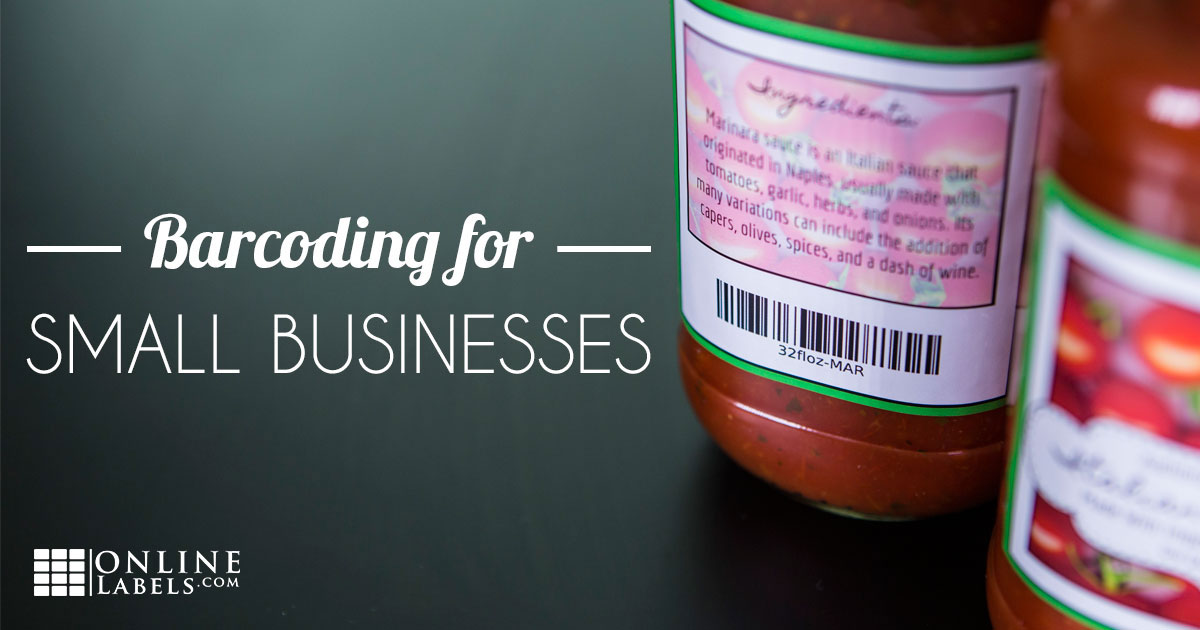Barcoding for Small Businesses

When do you know if your business is big enough to need barcodes? What does it take to add them to your existing inventory or checkout system? What are the costs and tangible benefits? While every case may be different, these answers can help point you in the right direction for your business.
Do I need barcodes for my small business?
Unless you're selling in a retail market (and by that we mean "big box stores" like Tesco), barcodes are completely optional. You might consider implementing a barcode system into your small business if:
- You run a product-based business
- You manage a lot of inventory
- You need more accurate inventory counts
- You have multiple retail or storage locations
- You need to track moving pieces
- You work with other vendors
- You want to prepare for growth
- You're not the only employee
- You want to speed up customer checkout times
- You want to appear more professional
How do barcodes help?
Here are the top four ways barcodes can help your small business.
Reduced Risk of Error
Manually typing a series of letters and numbers into a computer leaves your business vulnerable to inaccuracies. Every time you need to ring up a customer, track a package, or log inventory, you run the risk as hitting the wrong key on the keyboard. With manual data entry, the average person makes 1 error every 300 characters. Compare that to the accuracy rate of barcode scanners – 1 error every 36 trillion characters. Can your business afford to take that risk?
Time Savings
Data entry is a slow process. Think of the time it takes for your brain to do something versus the speed of your computer. While in small batches the time difference may be negligible, accumulated over hours or even pay-periods, that time will add up and could be put to better use. This can also be of utmost importance to your customers. Hand-keying products at checkout costs them time as well. Is their time worth the investment?
Lower Operational Costs
The popularity of barcodes have generally lowered the cost of the required equipment. As a one-time upfront cost, barcoding becomes less expensive than paying staff to execute the same tasks week after week.
You may also see this benefit with regards to your overhead. More accurate data can help you reevaluate your expenses. If you're paying for warehouse space, for example, overestimating your inventory could be costing your business unnecessary money.
Ease of Updating Pricing
Updating product pricing can be a time and labor-intensive process if your items have price tags affixed to them. Instead, display the price on the product's shelving or as signage and use barcodes on the actual products. This method requires much less work when prices change. Instead of changing out each price tag, you'd make the change once to your barcode database and to the one piece of pricing displayed near your product.
What does it take to implement barcodes?
Barcodes can be relatively painless and affordable to implement. You'll need:
Naming Convention

You'll need to create codes to identify each of your products. These should include details like size, shape, material, colour, type/category/department, vendor/manufacturer, warranty, and quantity.
- Initial time investment: 1-3 hours
- Rough cost: $0
Barcode Generator
Once you have your product names, you can begin creating your barcodes. While you can download barcode fonts, online generators can be easier. All you have to do is enter in your code and download your barcode for printing. Use our free barcode generator tool within Maestro Label Designer to create custom barcodes. Follow this barcode guide to learn how.
- Initial time investment: 1 hour
- Rough cost: $0
Label Printer
Desktop printers work great for small batches whereas dedicated label printers are ideal for larger operations. Evaluate your options and decide if a dedicated label printer is worth the investment.
- Initial time investment: 30 minutes
- Rough cost: $30-150
Barcode Labels
Barcodes come in variety of standard sizes. Shop our popular barcode label sizes.
- Initial time investment: 10 minutes
- Rough cost: $10+
Barcoding Software
You need a system that will interpret your product codes and translate them back to you. While programs like Microsoft Excel might be great for cataloging, they aren't ideal for other processes like inventory management. Browse top software systems.
- Initial time investment: 3-5 hours
- Rough cost: $0-$4,000
Barcode Scanners
The software doesn't much work without the hardware. You'll need to invest in at least one barcode scanner to read your barcodes and communicate with your program. Luckily, these can be relatively affordable. Shop the top 10 barcode scanners.
- Initial time investment: 15 minutes
- Rough cost: $20+
Whether the time for adding barcodes to your business is now or down the road, we hope we shed some light on the process. In the meantime, check out our Introduction to Barcodes for more information about the different types and their respective uses. You can also skip ahead to our other B2B barcode content: How to Create & Print Barcodes for Your Business.


